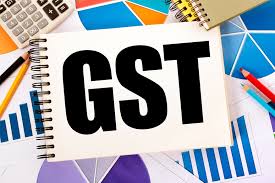Fault lines expand over GST cess
With the GST compensation cess to end in its present form by June, a confrontation between the Centre and the states is looming on reimbursements for anticipated revenue shortfalls.
Although the cess will continue, it will be used to pay the sum borrowed by the Centre on behalf of the states during the pandemic. But the states are expected to insist on compensation beyond June 2022 at the GST Council meeting later this month.The Centre, on its part, is likely to dangle the carrot of subsuming the cess as part of the GST after 2026.
The states had accepted the GST in 2017 on an assurance by the Centre that they would be given full compensation in the first five years of its introduction, assuming a revenue growth rate of 14 per cent over the base year 2015-16. The compensation is in the form of cess on luxury items and sin goods.
The states are demanding the Centre to continue to compensate them as the revenue buoyancy has not been as promised, while Covid-19 had a huge impact on revenue collection.
The compensation cess is levied on luxury and sin items such as aerated drinks, pan masala, cigarettes and automobiles over the peak GST rate of 28 per cent. The cess on cars goes up to 22 per cent and is 12 per cent for aerated drinks.
Sources have indicated that the Centre is considering a proposal to subsume the cess into the GST after 2026 to provide for greater revenue to the states.
Analysts said the states are unlikely to buy the argument that shortfalls will be met as tax collections have increased on account of the recovery from the pandemic as is evident from the impressive collections made in April.
The total GST collected in 2021-22, the last financial year, was Rs 14.9 lakh crore, up 31 per cent from 2020-21 and 22 per cent from 2019-20. In fact, collections in the month of April 2022 stood at an all-time high of Rs 1.68 lakh crore.
Apart from inflation, a huge surge in goods imports is a factor behind the massive rise in GST. Goods imports in 2021-22 jumped around 56 per cent to $612 billion. Under GST, imports are deemed inter-state supplies and subject to integrated GST
Integrated GST from imports stood at Rs 3.8 lakh crore in 2021-22, around 41 per cent higher than 2019-20. The overall GST in 2021-22 was 22 per cent higher than 2019-20 — a sign that higher imports have pushed up GST collections.
Subsuming the cess into the GST will mean the states will get half of the proceeds as state GST, in addition to getting 41 per cent of the Centre’s revenue as part of the Finance Commission recommendations.
Analysts said industry would oppose any attempt to subsume cess within GST as they were banking on an end to cess after 2026 that will make their products competitive. Citing judicial announcements, the analysts said courts have held that what cannot be levied directly cannot be levied indirectly: if the cess has served its purpose, it should go.
They said compensation cess is a vexed issue and a long-term solution needs to be found which would be a middle path to meeting the revenue needs of the states, while not significantly hurting industries.
Download our App to get knowledge updates: https://play.google.com
Join Our Telegram Channel for more updates:https://t.me/praveengst:




Comments
Post a Comment